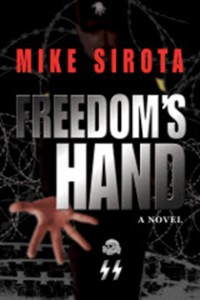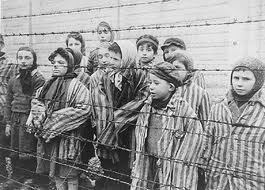Transitions can make or break a narrative. I first presented this post in 2013, and it will be just as relevant in 2023.
As a writing coach for two centuries or more I have read a lot of transitions from one POV to another, one scene to another, even one past era to a contemporary story, from countless students and clients. Many of them are fine, others not so much. You can confuse the crap out of your readers with a poor transition, or you can use the device to provide memorable moments that excite the reader, and for sure, that’s a good thing. Using my novel, Freedom’s Hand, I will show (not tell) you what I’m talking about.
To begin with, some Transition 101 stuff. There are a number of devices that let a reader know a transition is coming. First, a space break—on a manuscript page this would be a double-double space, sometimes with a dingbat or two, but the extra spacing should be enough. Next, and obviously, a chapter break. James Patterson uses 100+ chapters in many of his novels, as he is also switching between third-person and first-person narration (not recommended for novice writers). Then, numbered sub-chapters within a chapter. I like this device and used it in my novels, Fire Dance and The Burning Ground.
 There is also one that I call the “hand-off” transition. We’re in John’s POV for a while, then Mary comes in, there is some dialogue, then John walks out but we stay with Mary as the scene continues in her POV. For a skilled writer who can handle this seamlessly, no problem.
There is also one that I call the “hand-off” transition. We’re in John’s POV for a while, then Mary comes in, there is some dialogue, then John walks out but we stay with Mary as the scene continues in her POV. For a skilled writer who can handle this seamlessly, no problem.
Freedom’s Hand opens with a brief prologue, 1943 Poland, in the POV of a teenager named Nathan Adler. He is taken to Auschwitz, and the scene ends as Nathan witnesses what the Nazis do to his mother and sister:
Snarling German shepherd dogs, straining against their leashes, had kept the prisoners moving. As Miriam wandered too near some of them, one creature pulled free. The handler made no attempt to retrieve the dog. Its weight crushed the child before its jaws found her throat. Blood spattered the gray dust as it shook the limp body like a rag doll.
More blows fell on Nathan. They would not think of destroying him; a sturdy prisoner was valuable in an arbeitslager. Unable to will away the darkness, he did not see as two others from their train, under stinging orders, lifted Mama and rejoined the column on its march to oblivion.
Chapter one then opens over fifty years later, like this:
“What’s wrong, Grandpa?”
The small girl looked even smaller in the middle of the king-sized bed. Peering out from beneath the covers she gazed sleepily at the old man, who sat erect in the other bed. Slivers of dawn penetrated the motel room from behind heavy red drapes. He didn’t think the girl could see his face; that was good.
“Grandpa?” she said again. “Were you calling me?”
“No, schoenkeit, it was just a dream. Go back to sleep. It’s not time to be up yet.”
Slumber found the girl easily, as it always did. Nathan Adler was relieved. The trembling had lessened but he still perspired, even in the air-conditioned room.
 To begin with, the prologue ended with what I call a mini-cliffhanger, as all chapters should—something that makes the reader want to turn the page and learn more. We have the shocking reality of a concentration camp, and we wonder, how could Nathan have survived that? We turn the page and learn that he did. Whew! Now, for a few pages in his POV, we learn that he’s on a vacation with his family, and we learn a bit about that family—among the story’s main characters.
To begin with, the prologue ended with what I call a mini-cliffhanger, as all chapters should—something that makes the reader want to turn the page and learn more. We have the shocking reality of a concentration camp, and we wonder, how could Nathan have survived that? We turn the page and learn that he did. Whew! Now, for a few pages in his POV, we learn that he’s on a vacation with his family, and we learn a bit about that family—among the story’s main characters.
The initial transition in chapter one occurs a few pages in, after we’ve gotten a good idea from his internalizing just what Nathan is all about: a caring man who, despite the past demons that continue to haunt him, cherishes his family—daughter Susan Lowe, her husband David, and especially his granddaughter, Heather. The final two paragraphs of narration are indicative of Nathan’s character:
Crossing the room on carpeting that had once been thick, Nathan splashed cold water on his face to dispel the last effects of the nightmare. He would not risk going back to sleep again. Yesterday’s Salt Lake City newspaper lay on the table near the window. Drawing the drapes a few inches, Nathan gazed across alkali flats and low granite peaks at a sky that was a palette of colors swirling amid soft, billowing clouds; a desert dawn that could almost be heard.
Disdaining the newspaper, Nathan turned his chair and sat down to watch. At his age he had long since learned to make time for the wonders that God chose to share.
Across the road from the motel, staking out this Jewish family, is young Bobby Rayford, a member of Freedom’s Hand, a white supremacist group that has built an Auschwitz-style concentration camp in the desert of the American Southwest for the purpose of destroying all minorities. His scene opens thusly:
Bobby Rayford had seen lots of sunrises in his twenty years and couldn’t give a shit. He had sat up most of the night in his Ford pickup. Bleary-eyed, stiff, he swore irritably as he tried to stretch his long legs. At least he wasn’t hungry, despite his cadaverous appearance. He had loaded up on candy bars and Coke, and there was plenty left.
 Across the road, the now familiar Town and Country station wagon with the Illinois plates, which he had first seen yesterday in Salt Lake City, was parked in front of room 107. Rayford could read the two bumper stickers on the old car from where he sat. One was for the Chicago Bears. Christ, the Bears! The other was what had first tipped him off: SAVE SOVIET JEWRY. It was weathered, torn; been on for a long time, he figured.
Across the road, the now familiar Town and Country station wagon with the Illinois plates, which he had first seen yesterday in Salt Lake City, was parked in front of room 107. Rayford could read the two bumper stickers on the old car from where he sat. One was for the Chicago Bears. Christ, the Bears! The other was what had first tipped him off: SAVE SOVIET JEWRY. It was weathered, torn; been on for a long time, he figured.
Turning the words over in his mind, Rayford’s insides churned. Save Soviet Jewry! Imagine wanting to save Commie Jews, even if those bastards weren’t Commies anymore. Kill Soviet Jewry, that was more like it. Kill all damn Jewry!
Both Nathan and Rayford are watching the same sunrise, which links the two scenes—but notice the jarring difference in how they perceive it, even in the opening sentence. I transitioned to this scene with a space break and a couple of centered pound signs (hashtags, in the current vernacular), but even with nothing in between it would have been obvious.
I have more examples of how transitions can strengthen a writer’s story, and I’ll share them in the next post. Happy writing!
